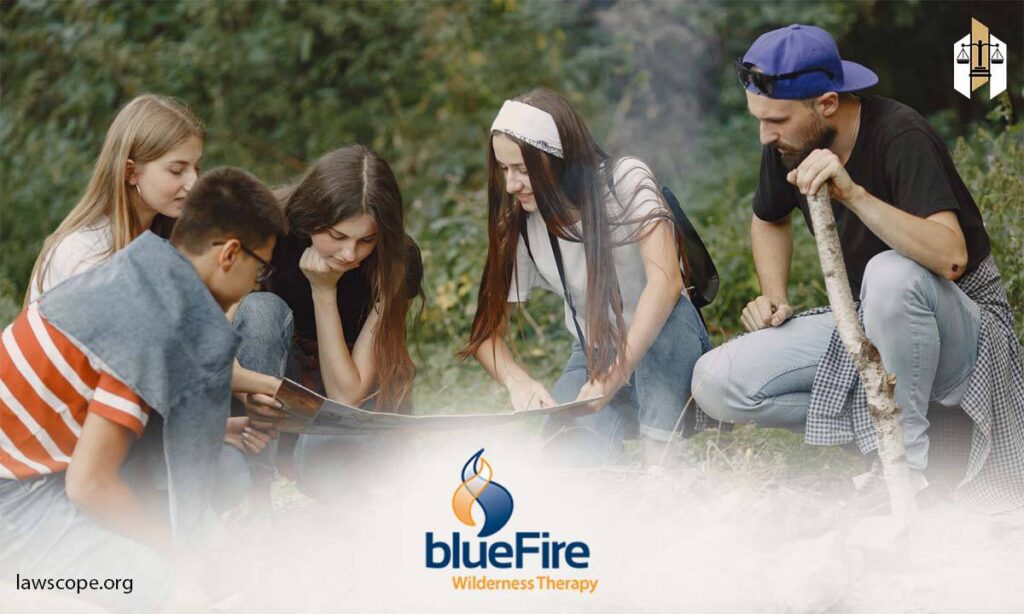
BlueFire Wilderness, known for its therapeutic wilderness programs, has recently found itself entangled in legal proceedings, leading to the emergence of the BlueFire Wilderness Lawsuit.
As families seek therapeutic solutions for struggling teens, understanding the legal landscape surrounding this lawsuit becomes crucial.
In this comprehensive guide, we’ll delve into the details of the BlueFire Wilderness Lawsuit, examining the allegations, legal implications, and the broader context of wilderness therapy programs.
Unveiling The BlueFire Wilderness Lawsuit: Navigating Legal Challenges in Therapeutic Wilderness Programs
In recent times, BlueFire Wilderness, renowned for its therapeutic wilderness programs, has become embroiled in legal proceedings, marking the emergence of the BlueFire Wilderness Lawsuit.
This legal action has brought attention to the intricacies of wilderness therapy programs and raised significant questions about participant safety, staff training, and transparency in the industry.
The BlueFire Wilderness Lawsuit revolves around allegations of wrongful conduct, with families asserting claims of negligence, emotional distress, and breaches of duty related to the treatment of participants.
Central to the legal claims are concerns about inadequate staff training, suggesting that insufficiently trained staff may contribute to unsafe conditions and jeopardize the well-being of program participants.
One of the key focal points of the lawsuit is the lack of informed consent regarding the nature and potential risks of wilderness therapy programs.
Families participating in the legal action argue that a lack of transparency in communication between program providers and families may have led to unexpected and harmful consequences during the therapeutic interventions.
This legal action has broader implications, prompting increased regulatory scrutiny of wilderness therapy programs across the industry.
Authorities are now reviewing licensing requirements, safety protocols, and adherence to industry standards to ensure the well-being of participants and prevent potential harm.
The BlueFire Wilderness Lawsuit serves as a call for industry reform, sparking discussions about the need for standardized regulations, clearer guidelines, and increased transparency.
This legal challenge encourages reflection within the wilderness therapy industry to address concerns raised by participants and their families, with an overarching goal of enhancing safety and accountability.
As the BlueFire Wilderness Lawsuit unfolds, it underscores the delicate balance between providing therapeutic interventions for troubled teens and ensuring their safety.
The legal landscape for wilderness therapy programs is evolving, leading the industry to reassess practices for safety and transparency.
The Rise of Wilderness Therapy
Wilderness therapy programs have gained popularity as alternative approaches to traditional therapeutic interventions.
BlueFire Wilderness, like many others, offers outdoor experiences aimed at fostering personal growth and healing for adolescents facing emotional and behavioral challenges.
However, recent legal actions have shed light on potential issues within the industry.
Allegations and Legal Claims
Wrongful Conduct: The BlueFire Wilderness Lawsuit alleges wrongful conduct related to the treatment of participants.
Families have come forward with claims of negligence, emotional distress, and breaches of duty, asserting that the therapeutic interventions may have caused harm rather than providing the intended benefits.
Inadequate Staff Training: Another focal point of the lawsuit is the alleged lack of adequate training for staff members.
Plaintiffs argue that insufficiently trained staff may contribute to unsafe conditions and inadequate supervision, potentially endangering the well-being of participants.
Lack of Informed Consent: Some families participating in the lawsuit claim a lack of informed consent regarding the nature and potential risks of wilderness therapy programs.
This raises questions about transparency in communication between program providers and the families seeking therapeutic interventions for their loved ones.
Legal Implications and Industry Scrutiny
Increased Regulatory Scrutiny: The BlueFire Wilderness Lawsuit has prompted increased regulatory scrutiny of wilderness therapy programs.
Authorities are reviewing licensing requirements, safety protocols, and adherence to industry standards to ensure the well-being of participants.
Calls for Industry Reform: The legal challenges faced by BlueFire Wilderness have sparked discussions about the need for industry-wide reform.
Advocates and concerned parties are calling for standardized regulations, clearer guidelines, and increased transparency to safeguard the interests of participants and their families.
The Broader Context of Wilderness Therapy Programs
Efficacy and Controversies: Wilderness therapy programs have faced both praise for their transformative potential and criticism for their lack of empirical evidence supporting their efficacy.
The BlueFire Wilderness Lawsuit raises questions about the broader efficacy of such programs and the need for rigorous evaluation.
Ethical Considerations: Ethical considerations surrounding the use of wilderness therapy for troubled teens have come to the forefront.
Balancing the potential benefits with the ethical treatment of participants remains a key challenge for the industry.
Participant and Family Perspectives
Emotional and Psychological Impact: Families seeking therapeutic interventions for their troubled teens often grapple with the emotional and psychological impact of the programs.
The BlueFire Wilderness Lawsuit reflects the deeply personal nature of these experiences and the challenges families face when their expectations are not met.
Seeking Accountability: Families participating in the lawsuit are seeking accountability for perceived wrongs.
Their experiences underscore the importance of clear communication, informed consent, and trust in therapeutic interventions for troubled youth.
Moving Forward: Industry Reflection and Legal Precedence
Industry Reflection: The BlueFire Wilderness Lawsuit catalyzes the wilderness therapy industry to reflect on its practices.
Providers are prompted to reevaluate their training protocols, safety measures, and ethical standards to enhance participant well-being.
Potential Legal Precedence: The outcome of the BlueFire Wilderness Lawsuit may set legal precedence for the industry.
Depending on the court’s decision, it could influence future legal actions and prompt systemic changes within wilderness therapy programs nationwide.
Discover More: DKOldies Lawsuit: Exploring Legal Matters and Recent Updates
Frequently Googled Questions on Bluefire Wilderness Lawsuit
The BlueFire Wilderness Lawsuit has sparked significant interest and inquiries, reflecting a growing concern about the legal landscape within therapeutic wilderness programs.
Families seeking clarity and information have turned to search engines with questions about the lawsuit.
In this guide, we’ll address the top five frequently Googled questions on the BlueFire Wilderness Lawsuit, providing clear answers to shed light on this legal matter.
1. What is The BlueFire Wilderness Lawsuit About?
The BlueFire Wilderness Lawsuit revolves around allegations of wrongful conduct related to the treatment of participants in therapeutic wilderness programs.
Families have come forward with claims of negligence, emotional distress, and breaches of duty.
The lawsuit specifically raises concerns about inadequate staff training, lack of informed consent, and potential harm experienced by participants during the therapeutic interventions.
2. What Are The Specific Allegations Against BlueFire Wilderness?
The allegations against BlueFire Wilderness include claims of negligence, emotional distress, and breaches of duty.
Families participating in the lawsuit assert that the therapeutic interventions may have caused harm rather than providing the intended benefits.
Specific concerns involve inadequate staff training, potentially unsafe conditions, and a lack of transparent communication regarding the nature and risks of the wilderness therapy programs.
3. How Has The BlueFire Wilderness Lawsuit Impacted The Industry?
The BlueFire Wilderness Lawsuit has triggered increased regulatory scrutiny of wilderness therapy programs across the industry.
Regulatory authorities are reviewing licensing requirements, safety protocols, and adherence to industry standards to ensure the well-being of participants.
The legal action has also prompted discussions about industry-wide reform, emphasizing the need for standardized regulations and increased transparency.
4. What is The Potential Legal Precedence of The BlueFire Wilderness Lawsuit?
The outcome of the BlueFire Wilderness Lawsuit may set legal precedence within the wilderness therapy industry.
Depending on the court’s decision, it could influence future legal actions and prompt systemic changes within therapeutic wilderness programs nationwide.
The lawsuit has become a focal point for discussions on participant safety, program transparency, and ethical considerations within the industry.
5. How Are Families and Participants Impacted By The BlueFire Wilderness Lawsuit?
Families and participants involved in the BlueFire Wilderness Lawsuit are seeking accountability for perceived wrongs.
The legal proceedings underscore the deeply personal nature of their experiences and the emotional and psychological impact of the therapeutic interventions.
The lawsuit has prompted families to advocate for clearer communication, informed consent, and increased transparency in therapeutic programs for troubled teens.
The BlueFire Wilderness Lawsuit has become a subject of significant interest and concern, prompting families and industry stakeholders to seek answers.
As legal proceedings continue, the broader implications on the therapeutic wilderness industry are being closely watched.
This guide aims to provide clear and concise answers to the top five frequently Googled questions, offering insight into the nature of the lawsuit and its potential impact on the industry.
May You Like Also: Smoothstack Lawsuit: Navigating Legal Challenges and Updates
Conclusion
The BlueFire Wilderness Lawsuit casts a spotlight on the legal complexities surrounding wilderness therapy programs.
As families navigate the delicate balance between seeking therapeutic interventions for troubled teens and ensuring their safety, the legal landscape evolves.
The industry, regulatory bodies, and program providers face a collective responsibility to address the concerns raised by this lawsuit and work towards establishing a safer and more transparent framework for wilderness therapy programs.
Amid legal proceedings, the overarching goal remains the well-being and positive transformation of the participants entrusted to these programs.
You May Like Also:


3 thoughts on “BlueFire Wilderness Lawsuit: Understanding The Legal Landscape”